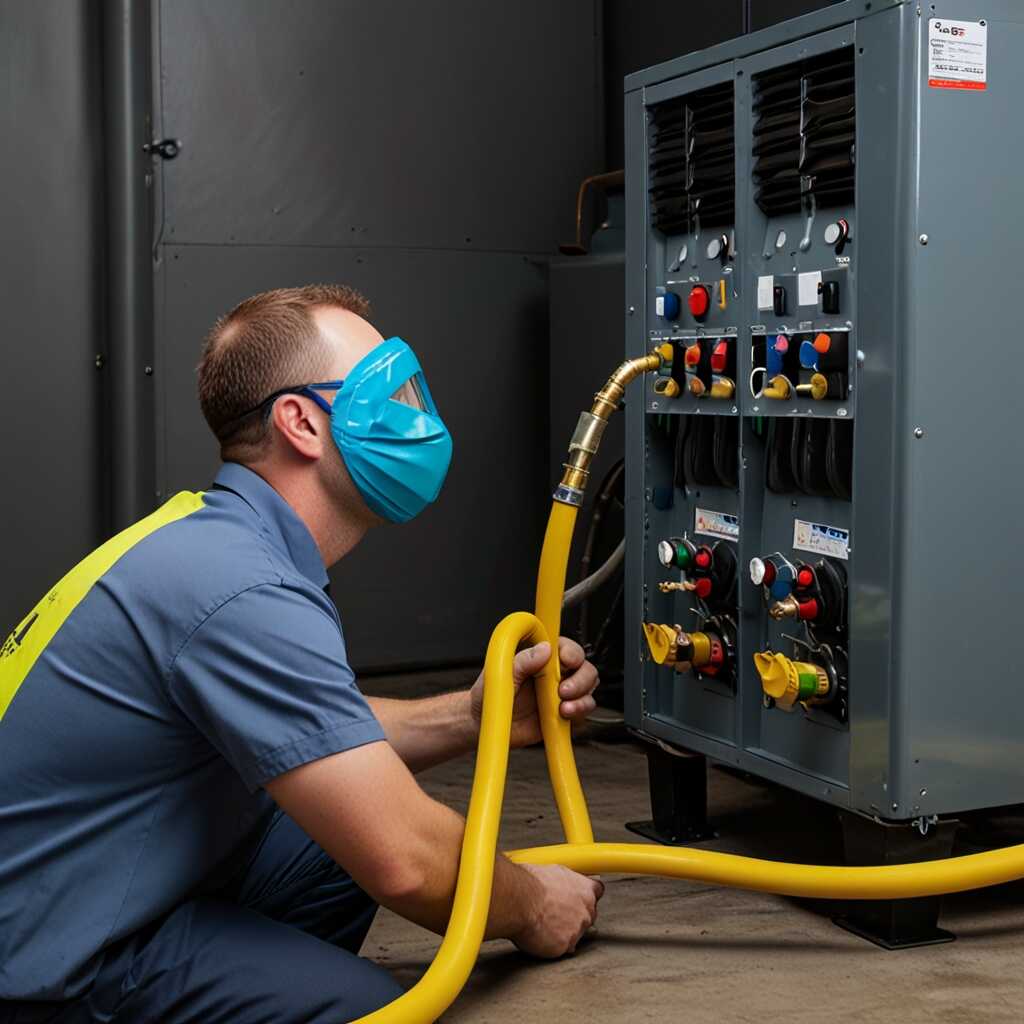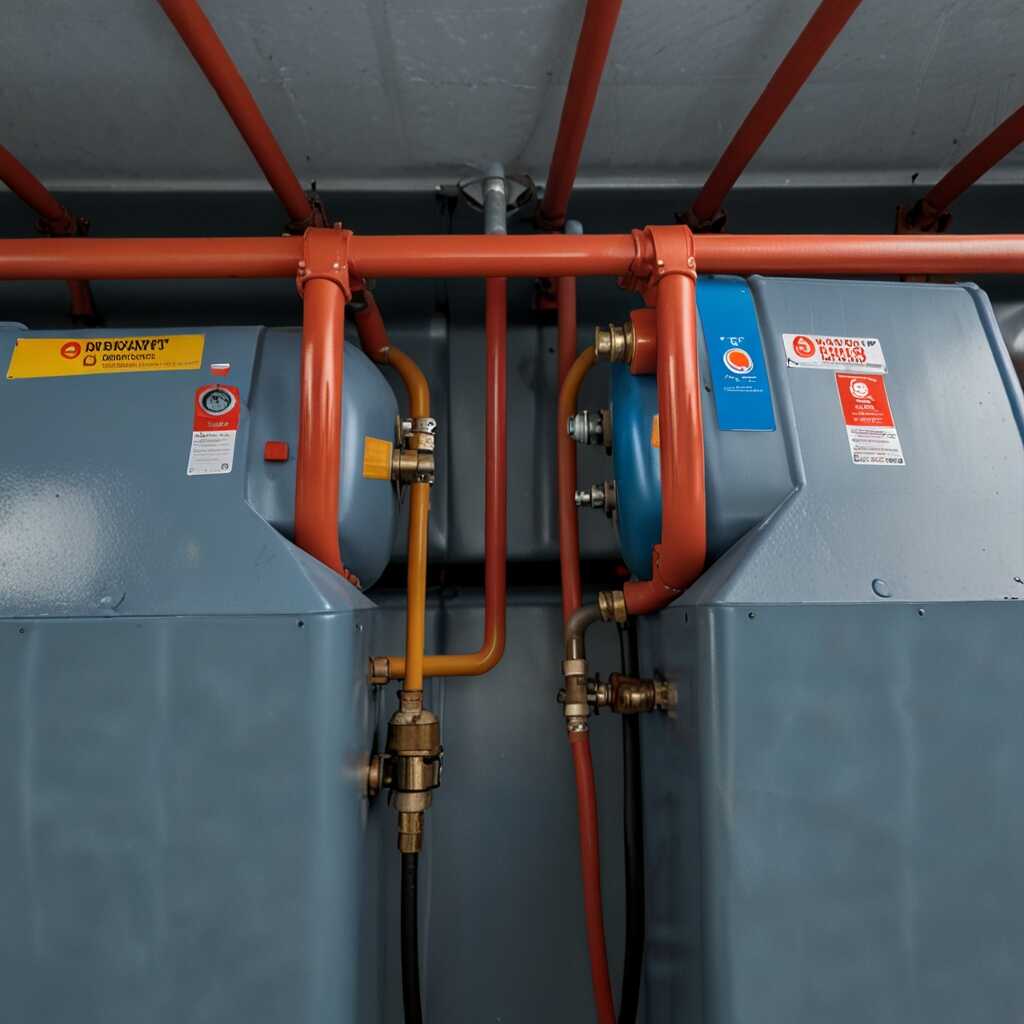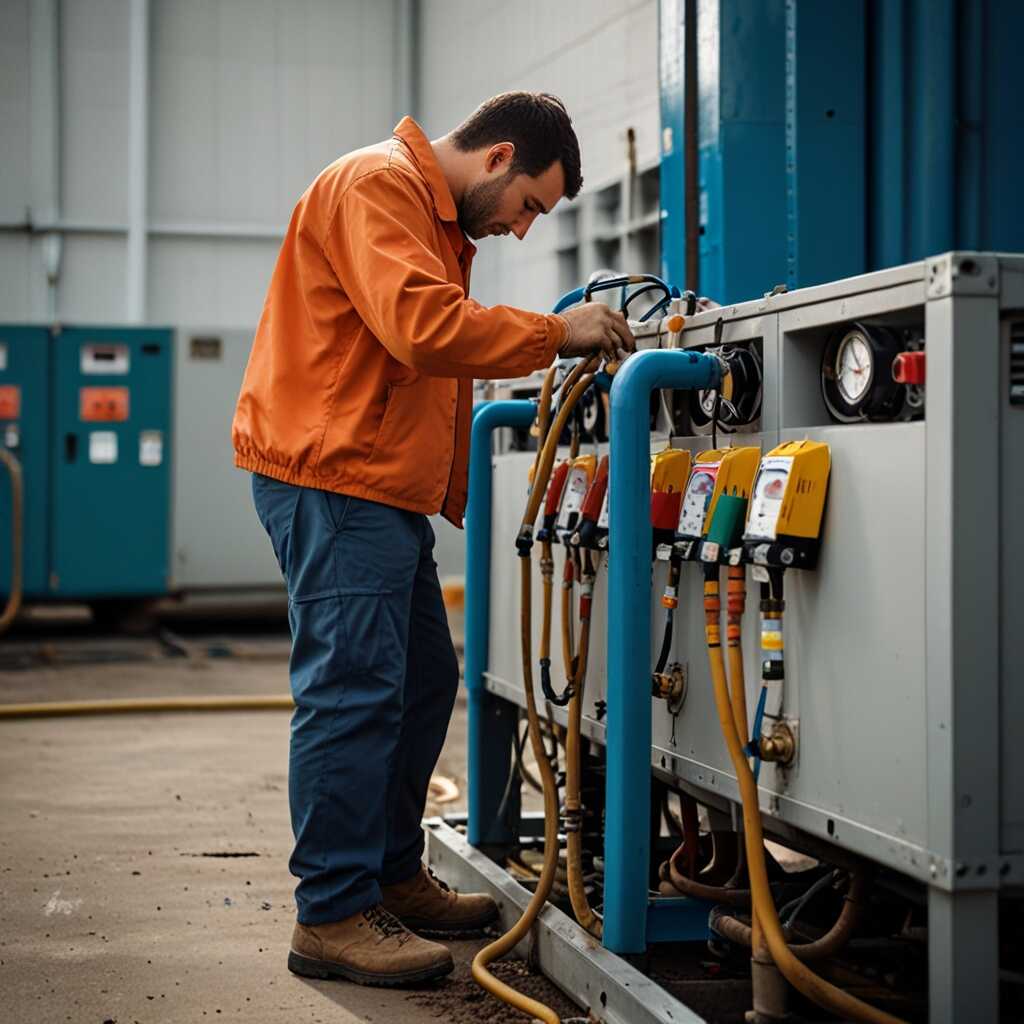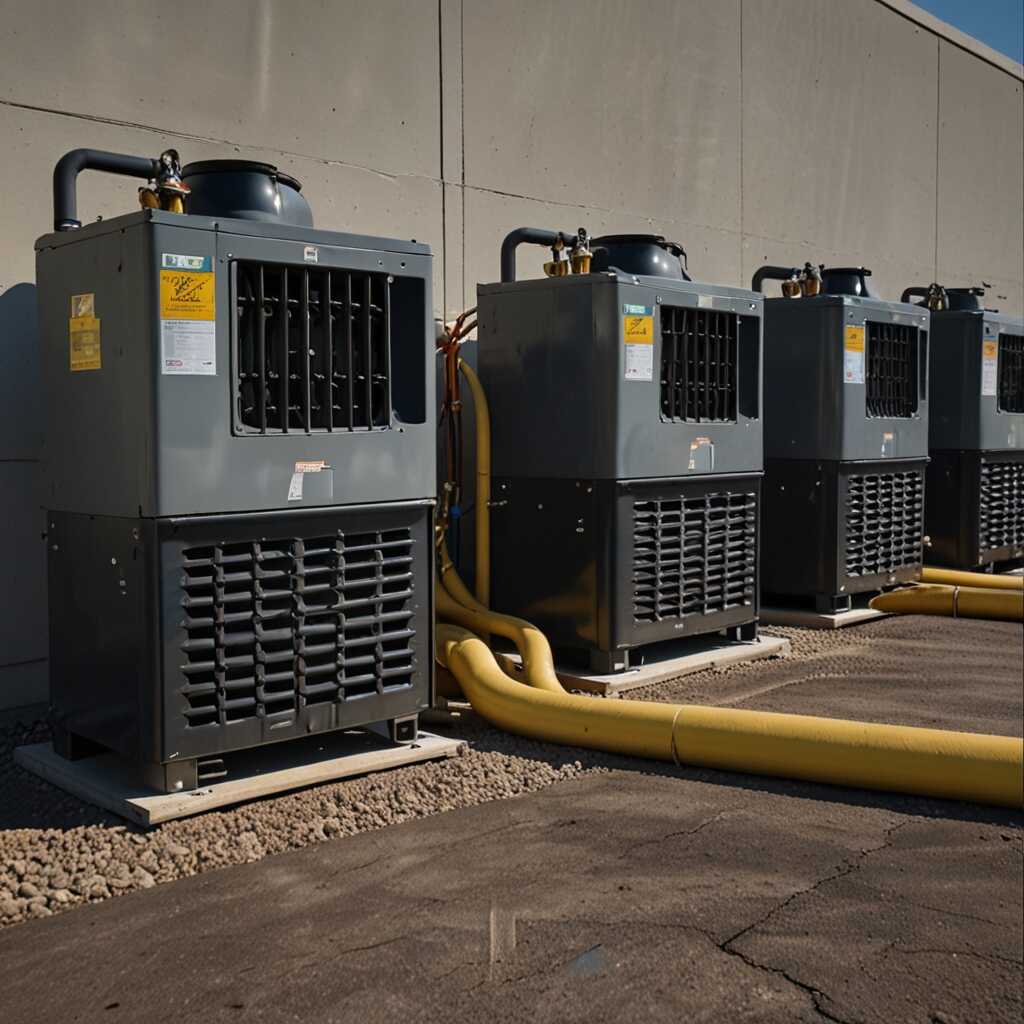Explore the benefits of refrigerant recovery machines with parallel cylinder filling to enhance your HVAC operations. These advanced machines offer faster recovery times and greater efficiency, making them essential for HVAC technicians. Refrigerant Recovery Pro provides expert guidance on selecting the right equipment and maximizing its use. Understanding the functionalities and advantages of these machines is crucial for compliance and optimal performance in refrigerant management.
Overview of Refrigerant Recovery Machines and Their Operation
Refrigerant recovery machines serve several essential functions, including recovering, recycling, and managing refrigerants. The main components of these machines include a compressor, a condenser, and a receiver tank. These parts work together to ensure that refrigerants are handled safely and efficiently, which enhances the overall recovery process. Advanced features like parallel cylinder filling allow for faster recovery times, ensuring technicians can complete their work more quickly. In terms of efficiency, reliable models can process a full cylinder in approximately 15 to 30 minutes, depending on various factors like the type of refrigerant.
Understanding the Essential Components of Refrigerant Recovery Machines
The essential components of refrigerant recovery machines include a high-efficiency compressor, a durable condenser, and a reliable receiver tank. The compressor is designed to suck in refrigerant gas and compress it into a liquid form. This liquid is then transmitted to the condenser, where it is cooled and converted back into a liquid state. The receiver tank stores the recovered refrigerant, ensuring reliable and safe management. Features like parallel cylinder filling allow multiple recoveries simultaneously, enhancing efficiency for HVAC technicians. Understanding these components helps users appreciate how these machines improve refrigerant management.
Efficiency Enhancements with Parallel Cylinder Filling Features
Parallel cylinder filling features significantly enhance the efficiency and productivity of refrigerant recovery machines. These capabilities allow operators to fill multiple recovery cylinders simultaneously. This process saves time and reduces downtime during HVAC projects. Machines equipped with this feature enable technicians to manage their workloads better and respond to service calls promptly. Increased productivity is crucial in HVAC operations, allowing technicians to serve more clients each day. The ability to quickly switch between cylinders eliminates wasted time while waiting for one cylinder to fill. Therefore, parallel cylinder filling serves as a valuable asset in ensuring reliable operation and high performance in refrigerant recovery.
Impact of Parallel Cylinder Filling on HVAC Operations
Parallel cylinder filling dramatically impacts HVAC operations by improving workflow efficiency. Technicians can connect multiple cylinders, allowing for simultaneous recovery and refilling processes. This dual action enhances recovery rates and speeds up project completion times. Studies show that using these advanced recovery machines can result in up to 50% reduced filling times when handling various refrigerants. Companies that invest in HVAC machines with these features also highlight significant operational savings and increased customer satisfaction. Therefore, technicians equipped with effective refrigerant recovery tools can ensure a reliable and faster service, meeting their clients’ needs efficiently.

Importance of Regulatory Compliance in Refrigerant Management
Regulatory compliance is essential in refrigerant management to ensure environmental protection and sustainability. Compliance helps reduce harmful emissions that affect climate change. HVAC technicians must understand and follow specific regulations, such as the Clean Air Act and Section 608 of the Clean Air Act. These regulations dictate how refrigerants must be recovered and disposed of. Proper techniques using refrigerant recovery machines can recover up to 95% of the refrigerant, preventing waste and promoting responsible environmental practices. This aligns with sustainability initiatives and maintains compliance with environmental protection laws.
Key Regulations for HVAC Technicians in Refrigerant Recovery
HVAC technicians must adhere to several key regulations governing refrigerant recovery. The EPA mandates compliance with the Clean Air Act, regulating the use and disposal of refrigerants. Section 608 outlines technician certification requirements to handle specific refrigerants, ensuring that only trained professionals perform recovery tasks. Additionally, the industry faces state-specific regulations that may impose stricter limits. Following these regulations ensures that technicians operate within legal boundaries and enhances the reliability of their practices. Expert knowledge in these areas improves overall compliance and promotes environmental stewardship.
Key Data and Statistics on Refrigerant Recovery Machines
- Over 15 million HVAC systems may require refrigerant recovery annually in the U.S.
- Using recovery machines can reclaim up to 95% of used refrigerant efficiently.
- Recovery machines save companies an average of 20% on refrigerant costs.
- Over 50% of HVAC technicians report using machines with parallel filling.
- Proper refrigerant recovery can reduce environmental impact by 99% when done correctly.
- The recovery rate greatly influences system efficiency, affecting 20% energy performance.
- Regulatory standards require capturing refrigerants to limit harmful emissions.

Evaluating Different Recovery Machines in the Market
When selecting refrigerant recovery machines, focus on key features including reliability, energy efficiency, and performance testing. Parallel cylinder filling models enhance efficiency as they can simultaneously fill multiple cylinders, reducing the time spent on recovery tasks. These machines generally include electronic controls for precise monitoring and improved control over refrigerant handling. Some manufacturers, like the top-rated companies in HVAC applications, provide robust reviews and comparisons, helping users make informed decisions based on real-world data.
Essential Features of Parallel Cylinder Filling Machines
Parallel cylinder filling machines are designed to streamline the refrigerant recovery process. These units can handle large volumes quickly and efficiently by filling multiple cylinders at once. When assessing these models, check for durability and specialized features that improve performance, such as automatic shutoff and built-in filters. Reliable manufacturers provide excellent warranties and technical support, ensuring that HVAC professionals receive the best value for their investment. Read expert reviews to find models that have proven performance in the field, delivering consistent results over time.

Maximizing Efficiency: Best Practices for Recovery Machines
HVAC technicians should prioritize essential training techniques to ensure all personnel are well-equipped to operate refrigerant recovery machines. This includes understanding the machine’s features, safety protocols, and recovery procedures. Technicians should also engage in hands-on training and regular refresher courses, which enhance their efficiency and operational reliability. Maintenance best practices include regular cleaning of filters and draining oil to increase equipment durability. It’s crucial to establish a performance testing schedule, ideally every six months, to confirm the machine’s effectiveness and reliability in various conditions.
Effective Maintenance Techniques for Recovery Machines
Maintaining refrigerant recovery machines is vital for their ongoing performance. Regular checks of seals and hoses prevent leaks, ensuring a reliable operation. Technicians should review the owner’s manual for specific maintenance procedures and service intervals. Scheduling an annual comprehensive check by an expert also enhances equipment durability. Additionally, calibrating the machines helps maintain accurate performance limits. These practices not only extend the lifespan of the equipment but also ensure that technicians can count on its efficiency during critical HVAC operations.
Advantages of Utilizing Advanced Recovery Systems
- Increased efficiency leads to faster recovery and refill processes.
- Parallel filling capabilities streamline refrigerant transfer between cylinders.
- Cost savings through minimized refrigerant loss during the recovery process.
- Environmental compliance reduces potential penalties from regulatory bodies.
- Enhanced safety features protect technicians from risks associated with refrigerants.
- Robust design ensures durability and lower maintenance costs over time.
- Greater versatility allows for use in various HVAC applications and settings.

Future Directions in Refrigerant Recovery Technology
The latest trends in refrigerant recovery technology focus on enhancing efficiency and reliability. Notable innovations include advancements in parallel cylinder filling, which allows for faster and more effective refrigerant recovery. Leading companies such as Refrigerant Recovery Pro are at the forefront, providing reliable recovery machines designed for optimal performance. By 2025, the market anticipates launching over 20 new refrigerant recovery machine models. These models will incorporate improved features that enhance testing reliability and provide exceptional user experience.
Innovative Features in New Refrigerant Recovery Machines
New refrigerant recovery machines are incorporating innovative features that significantly enhance functionality and overall performance. For example, parallel cylinder filling mechanisms are designed to improve recovery speed and efficiency. These features ensure that refrigerants are reclaimed more quickly, reducing downtime. Additionally, the latest models include digital displays that provide real-time monitoring of recovery metrics. This functionality helps technicians optimize the recovery process and make informed decisions. Reliable performance is essential in HVAC applications, making investments in these advanced machines crucial for future success.
Common Issues Faced with Recovery Machines and Solutions
Technicians frequently face challenges with refrigerant recovery machines, such as low recovery efficiency, malfunctioning gauges, and leaks. Low recovery efficiency might occur due to blocked filters or improper settings. Inspecting for clogs in hoses and verifying compressor operation helps restore optimal performance. Malfunctioning gauges may give inaccurate readings, affecting workflow. Regular maintenance and calibration ensure reliable readings. Leaks often occur at connection points. Using quality sealing materials and routinely inspecting joints can prevent refrigerant losses. These troubleshooting tips provide essential guidance for efficiently resolving issues and maintaining workflow.
Preventative Maintenance for Recovery Machines
Preventative maintenance is crucial for ensuring refrigerant recovery machines remain durable and efficient. Regularly inspect hoses, connections, and gauges to identify potential issues early. Clean or replace filters frequently to maintain airflow and performance. Schedule annual professional testing for reliability and compliance with regulations. This practice can significantly enhance recovery efficiency and prolong equipment life. Adopting these methods allows HVAC technicians and businesses to achieve consistent results, reducing downtime and ensuring a comfortable working environment.
Leading Brands and Their Application Areas
- Brand A specializes in machines for commercial HVAC applications, focusing on larger equipment.
- Brand B provides machines tailored for residential technicians handling smaller systems.
- Brand C offers robust units that are EPA certified, ensuring compliance and reliability.
- Brand D is known for budget-friendly recovery solutions, appealing to start-ups and small businesses.
- Brand E features advanced technology, suitable for professionals needing high-speed recovery.
- Brand F emphasizes portable designs, ideal for technicians working in the field.
- Brand G caters to educational institutions, focusing on training future HVAC professionals.
Educational Resources for Advanced Refrigerant Management
HVAC professionals can enhance their skills by exploring various educational resources related to refrigerant recovery and management. Best practices for refrigerant recovery include using equipment designed for optimal efficiency, following EPA guidelines, and conducting regular reliability testing. Comparisons of refrigerant recovery machines, especially those with parallel cylinder filling, highlight their advantages in fast and effective refrigerant recovery. The latest efficiency ratings reveal which machines provide excellent performance, helping technicians make informed decisions. Numerous research papers and articles can help professionals stay updated on regulatory changes and equipment innovations.
Understanding Efficient Refrigerant Recovery Techniques
Efficient refrigerant recovery techniques are essential for HVAC technicians. These methods ensure compliance with environmental regulations while maximizing recovery speed and reliability. Recovery machines with parallel cylinder filling allow for simultaneous filling of multiple tanks. This capability improves operation efficiency and reduces downtime. Expert reviews and comparisons of these machines indicate they often include features that enhance usability and performance. Technicians should seek guidance from resources available on Refrigerant Recovery Pro to stay informed about tested and proven recovery solutions.